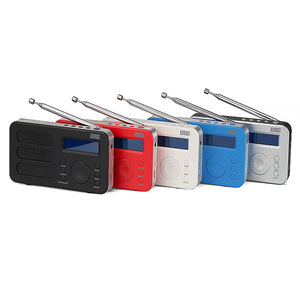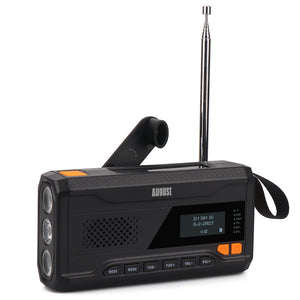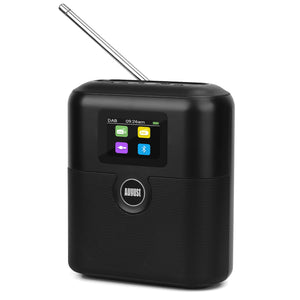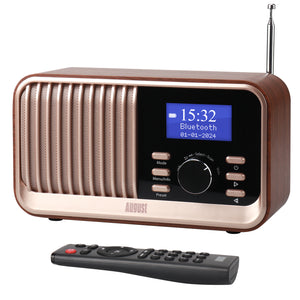Our audience are no strangers to the intricacies of DAB and FM radio, and some of you might even have been using FM as a hobby or professionally since its very inception between 1936 and 46! (Sorry, didn't mean to make anyone feel old!).
FM might have lived a long and world-changing life, but it certainly isn't over yet and the BBC have thankfully declared support for a report suggesting FM should continue service until 2030 at minimum.
For the younger audience, FM is a technology you could easily have missed entirely, and so this page serves as a quick once-over of what FM is, how it changed the country and why it still holds up to modern radio and streaming services!
What is FM?
FM is a type of radio broadcast technology from the early-to-mid 1900's. The modern equivalent that more people in recent times may have heard is DAB, and the even more modern equivalent is online radio and streamed radio.
FM was revolutionary in that it adopted a wartime technology and developed it into something for all walks of life. World War 1 saw such primitive technology that American pilots opted to remove the radio unit entirely to save weight!
So, years later when the technology of radio transmission across large distances to multiple devices at once was refined, FM was proving to the world that large-scale radio communication was possible on a never-before-seen level.
It is not that the science of the process is complex by modern standards, but more the fact that such a simple principle could provide hundreds of radio stations to thousands of people reliably for decades upon decades; that simplicity is what makes FM a lasting testament to radio technology.

What Does FM Mean?
The term itself stands for Frequency Modulation, and is tied to the very purpose of radio broadcasting. If a radio wave was sent out and received directly, with no real control over the frequency of the wave, then you'd have a network with one (1) radio station. While that is still great, variety is the spice of life so radio broadcasters needed a way to separate stations.
The two methods for this were FM, Frequency Modulation and AM, Amplitude Modulation. AM Radio is incredibly long-distance and designed for systems that operate on that scale, such as weather radio and emergency broadcasts. FM is much more malleable and can be relayed, manipulated and directed to local areas as well as national coverage.
Frequency Modulation allowed different radio stations to exist on the same broadcast by having each station attach itself to a frequency. The "modulation" refers to the change in frequency of your radio receiver to change the station. As you change the reception frequency, the radio station changes too!
The Freedom of Frequency Modulation
By matching your receiver to a frequency which a radio broadcast is using you can hear the station clearly. However, because the technology is based on single points of chosen frequency among an entire range, you can also "experiment".
By changing the reception frequency slowly through the range you can pick up snippets of all kinds of radio chatter, find new stations and discover the precise frequencies for your local area which work best!
This "exploration" of the radio waves provided a freedom to households across the nation, to explore their own tastes in entertainment and music as well as keep up with national news.

Growing Up with FM Radio
As someone who grew up with a radio in his room, I can attest that scanning through frequencies and suddenly hearing a new band completely different to what you've heard before is an experience unmatched in this streaming age. Streaming apps are constantly trying to push new music on you based on your current playlists and tastes, but relying on algorithms has dulled the experience. the immediacy of the experience is gone, replaced with a sort of inevitability.
The rush of finding something new on the radio is only in part due to the actual music, with the real emotional core being more based on the randomness, human element. A radio host chose to share that song, at that time, and you get that sense of "live" broadcasting, of managing to catch a valuable moment before it slips away. It's that discovery that makes radio so special, and one reason I am happy it will remain.
How Does FM Stack Up in 2023?
With the reminiscing and background out the way, just how does FM stack up against the new digital (DAB) and online (Internet Radio / Streaming) services?
Reasons to Use FM Radio in 2023
1. Cheap and Cheerful Simplicity
The simple science of FM radio is what made it so popular to begin with, and that simplicity has endured to this day. The core scientific concepts it's based in make FM radio timeless, saving some catastrophe in which there's too much radio interreference to use the system any more.
You can pick up an FM radio or even wire your own one for less than a year of Spotify would cost and get listening in moments.
2. Worldwide Usage
Discovery is a big part of the FM experience, and that extends to the physical world too! Exploring new places on holidays and trips gives access to their local FM radio stations. While you might not understand the hosts, music is a universal language.
Once again because of the simplicity of the tech, an FM radio in the UK is not really any different to an FM radio anywhere else! You can use the same radio at home just as easily as the other side of the planet.
3. News, Entertainment, Music - People
One key feature lost in the internet radio and streaming age are the hosts. It's certainly true that many people can't stand the moments of radio which aren't music, be they ads or a host segment. However, to me the appeal of FM is the personal touch. It isn't constant music, because there's a real person sitting in a real studio!
Being able to experience live interactions, music choices, segment changes and breaking news can only happen on live radio. Internet radio and streaming capitalised on the idea that all you want is music, but radio has much more to offer than just music.
4. Free to Listen Independent Connectivity
FM operates with frequency modulated radio waves between a set range of frequencies. So long as these frequencies aren't actively being interfered with, then you can access your stations. This means no internet connection, account, subscription or anything else is needed. A receiver and speaker is all you need to enjoy as much radio content as you please, even in power cuts or internet outages, or while camping / hiking in remote areas.
Explore the Radio Waves
Jump back in to FM if it's been a while, or if you've never heard of it before! It couldn't be easier to access a wealth of entertainment, news and music. It is old technology, and it does have ads - but it's also free, live, and keeps it real with zero strings attached.





Leave a comment